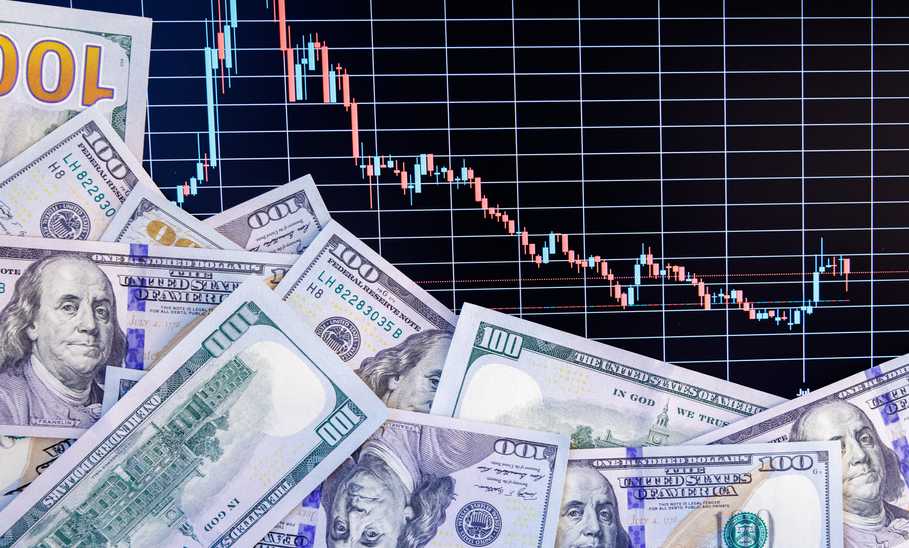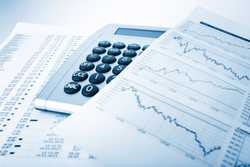What Is The S&P 500?

Our evaluations and opinions are not influenced by our advertising relationships, but we may earn a commission from our partners’ links. This content is created by TIME Stamped, under TIME’s direction and produced in accordance with TIME’s editorial guidelines and overseen by TIME’s editorial staff. Learn more about it.
The S&P 500 is an index that tracks the stock market's performance based on the share price fluctuations of 500 of the largest companies in the United States. It’s a weighted index based on market cap, which means more valuable companies have a greater influence on the index's direction.
Short for the Standard and Poor’s 500, the index dates back to the 1920s and touts itself as the “proxy of the U.S. equities market.” Yet, this label doesn’t tell the full story. We contacted a few analysts to explain the impact and usefulness of the S&P 500, and its limitations.
We cover the following in our quick guide to the S&P 500:
INVESTMENT AND INSURANCE PRODUCTS ARE: NOT A DEPOSIT • NOT FDIC INSURED • NO BANK GUARANTEE • MAY LOSE VALUE
As mentioned, the S&P 500 is a capitalization-weighted benchmark of the large-cap U.S. equities market. The index gauges the stock market's performance by calculating the share-price performance of 500 of the largest companies. These 500 companies are the most influential and powerful movers in the market.
“The S&P 500 represents about 80% of the total investable US stock market and is the most valuable index in the world at over $38 trillion,” says Ryan Graves, president of Bemiston Asset Management.
The largest of these 500 companies have the most pull in the market because the index is weighted by market cap (Think of such companies as Google, Apple, Amazon, or Microsoft). This is why analysts use caution when looking at the S&P 500 as a complete representation of the equities market.
“Because it is a market-capitalized index, the largest companies disproportionately influence it,” says Graves. “The top ten market values in the index represent 30% of its total value.”
“It would be untrue to say that the S&P 500 is a barometer for the entire stock market,” he says. “The ‘Magnificent Seven’ (companies) are up about 70% (in 2023) while the remaining 493 firms are up just 6%, despite the S&P 500 returning almost 20% thus far this year.”
Graves says situations like this are not unusual. “Throughout its history, the S&P 500 is carried by only a handful of stocks,” he says.
The S&P 500’s performance is calculated using only the free-floating shares of stock (shares that are publicly traded). This is to avoid overweighting companies with a large amount of outstanding shares that are not accessible to the general public.
In equation form, it looks like this:
Index level = (SUM (Share price * Publicly-traded shares)) \ Divisor
Put another way, it’s calculated like this:
Step 1: Calculate the market cap for each company. You’ll do this by starting inside the parentheses and multiplying the share price by the number of publicly traded shares (the float).
Step 2: Summation: Add all of the market caps together for the companies in the S&P 500.
Step 3: Divide the total market cap by a set divisor determined by Standard and Poor’s. This proprietary number is used to scale down the summation of the market caps to something more manageable. It’s an economically insignificant number and is adjusted each quarter when the index is rebalanced (more on that later).
A few quick notes: The S&P 500 is a price index, not a total return index, which doesn’t include dividends. And technically, the index includes 503 constituents, not 500. This is because some companies have multiple types of share classes that are included in the S&P 500.
Recorded values include the beginning price, high, low, and price at the close of the market.
For a company to be included in the S&P 500, it must fit the following guidelines:
Index rebalancing is when the index adjusts the share weights and constituent companies included in the S&P 500. The index is rebalanced quarterly, in March, June, September, and December, so that it more accurately reflects the large-cap U.S. equities market. Index rebalancing also helps funds tied to the index stay profitable.
Global macro strategist and Vice President at the Carson Group Sonu Varghese, explains, “The index reflects the dynamic nature of the capitalist economy in the US, with newer and stronger companies continuously coming into the index and older and weaker companies leaving it.”
“For example, in the 2000s, financials and energy companies dominated the index, whereas tech companies have dominated over the last decade. Index returns are driven by profit growth of constituent companies over the long run, which has supported consistent gains over extended time periods,” he says.
Three major things happen during rebalancing:
Companies included in the S&P 500 may also be adjusted when an event occurs that makes the company ineligible for membership in the S&P 500 (such as an acquisition).
Below is a list of the 25 largest companies in the S&P 500, to give you an idea of the included companies. The top seven companies (in bold) are known as the “Magnificent Seven” and account for approximately 29% of the index based on market capitalization weighting.
S&P 500 companies span various industries in the U.S. equities market. Here are the sector weightings as of Nov.30/23:
The easiest way to invest in the S&P 500 is by opening an online brokerage account and purchasing ETFs or index funds that are tied to the S&P 500 index.
Here are the steps to follow:
When you invest in an S&P 500 investment fund, your return will come from that fund and its specific structure, not the index itself.
INVESTMENT AND INSURANCE PRODUCTS ARE: NOT A DEPOSIT • NOT FDIC INSURED • NO BANK GUARANTEE • MAY LOSE VALUE
What most people want to know when they research the S&P 500 is how the index as a whole is performing. Fortunately, the index has been tracked for the past 100 years.
The S&P 500 began as an index of 233 companies in 1923. The company was then called the Standard Statistics Company and it calculated its Composite Index every week from these 233 companies. In 1926, it changed to a cap-weighted index of 90 companies that was updated daily.
The S&P 500 in its current form was launched on March 4, 1957, with 500 of the largest companies in the U.S. This long history provides investors with a large amount of data to interpret.
“Perhaps the most important reason to track the S&P 500 is that there is so much history, and the history is very accessible,” says Hugh Johnson, chairman emeritus of Graypoint LLC.
The annual percentage change is calculated from the last day of trading from one year to the previous year. For the past 10 years, the annual performance has ranged from -19.44% to 28.88%. Since inception, S&P returns have averaged just over 10.17%.
2022: -19.44%
2021: 26.89%
2020: 16.26%
2019: 28.88%
2018: -6.24%
2017: 19.42%
2016: 9.54%
2015: -0.73
2014: 11.39%
2013: 29.6%
The S&P 500 can also serve as a leading economic indicator. Johnson says, “It is worth reminding ourselves that the S&P 500 is not only indispensable to understanding what is going on now in the equity markets, it is useful as a leading indicator of what lies ahead for the economy.”
“It is one of the ten variables included in the Conference Board’s Index of Leading Economic Indicators. It qualifies for good reason.”
“It is useful in trying to decide if the economy is headed toward better times or not. That is, it is useful in making investment (asset allocation) decisions, but also in making sound business decisions.”
Three major U.S. stock market indices measure the performance of the stock market but each has a different method for doing it, including which stocks are tracked and how the index is calculated.
The Dow Jones Industrial Average, or Dow Jones for short, is an index that tracks the price-weighted average performance of 30 blue-chip stocks—far fewer than the 500 stocks of the S&P 500. It’s another way to gauge how the U.S. stock market is doing based on how the shares of some of the largest companies in the U.S. are performing.
Inclusion in the Dow Jones is based on different criteria than the S&P 500 and includes the company’s reputation, growth, investor interest, and representation of the broader market.
The Nasdaq Composite Index tracks all domestic and international common stock listed on the Nasdaq stock exchange. That’s more than 2,500 companies. It’s a tech-heavy index with around 40% of stocks coming from the tech sector. In short, the index tracks more companies than the S&P 500 but measures a smaller range of industries.
The S&P 500 plays an important role in the economy and your portfolio. Knowing what you’re investing in and how the companies around you grow and deliver value can help you become a better, more informed investor. However, it’s also important to understand the limitations of measuring the S&P 500 because of how much the top companies affect the value of the index.
Whether you’re actively managing your own brokerage account or having to decide where to direct your retirement funds, knowing where your money is invested can help you make better decisions.
The information presented here is created by TIME Stamped and overseen by TIME editorial staff. To learn more, see our About Us page.




